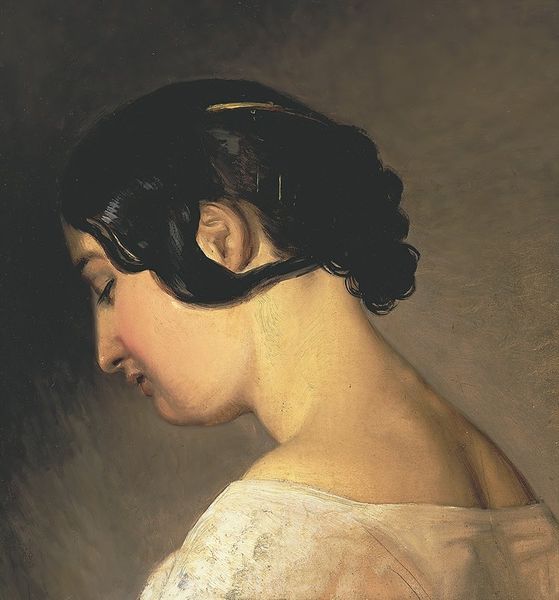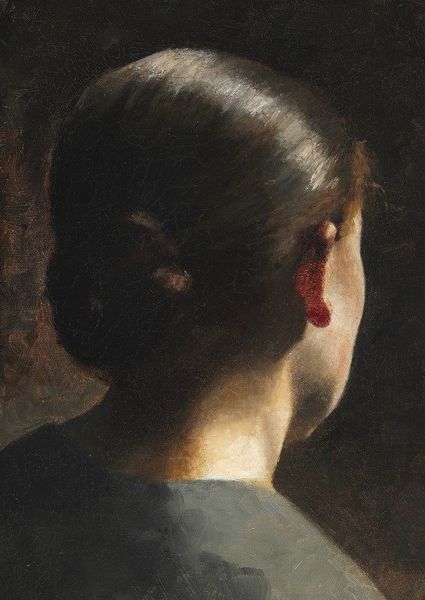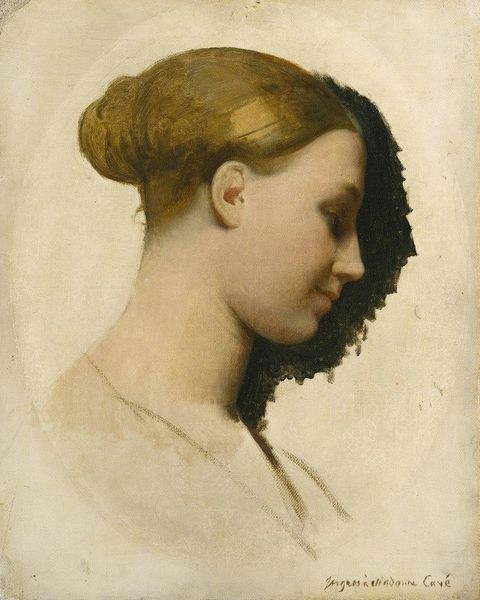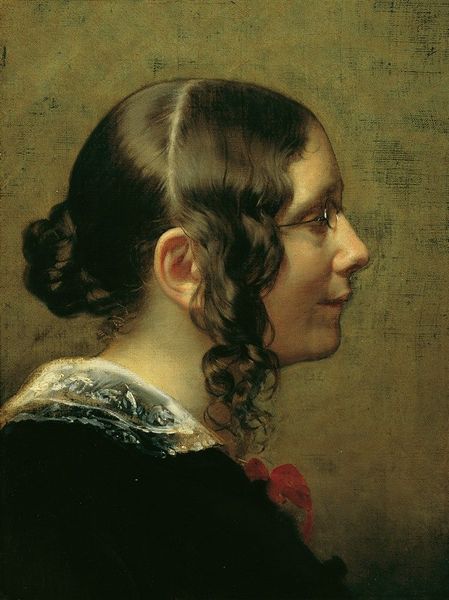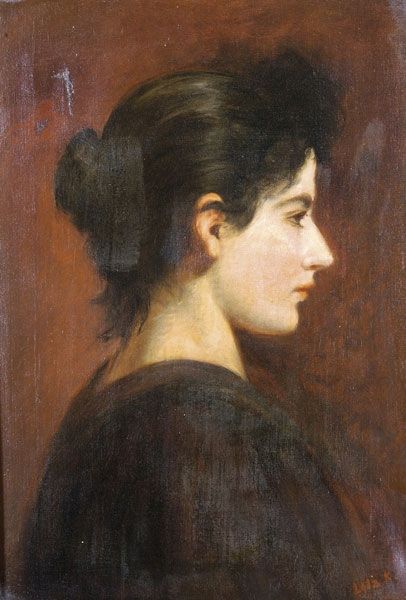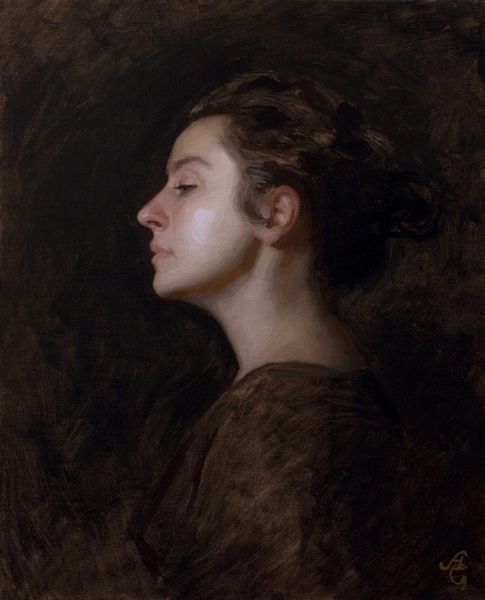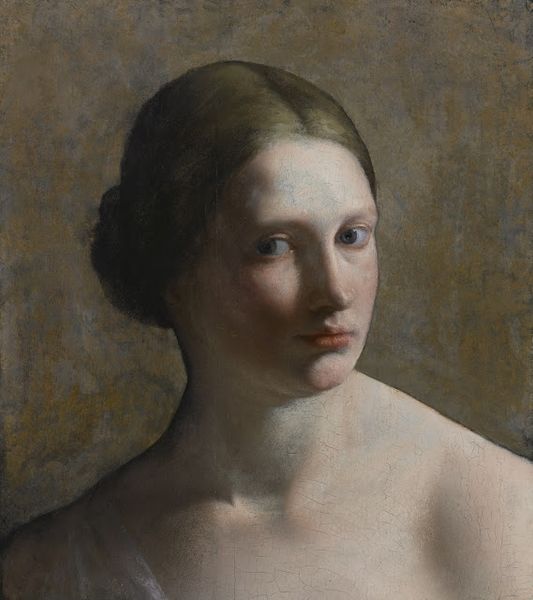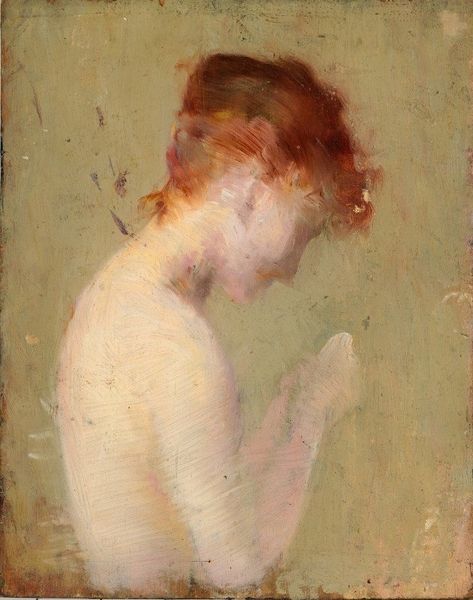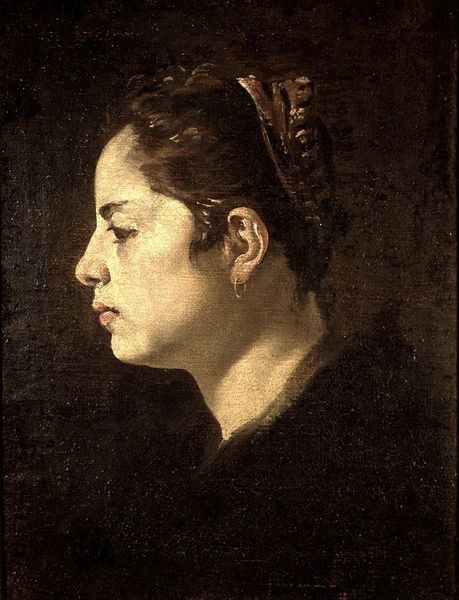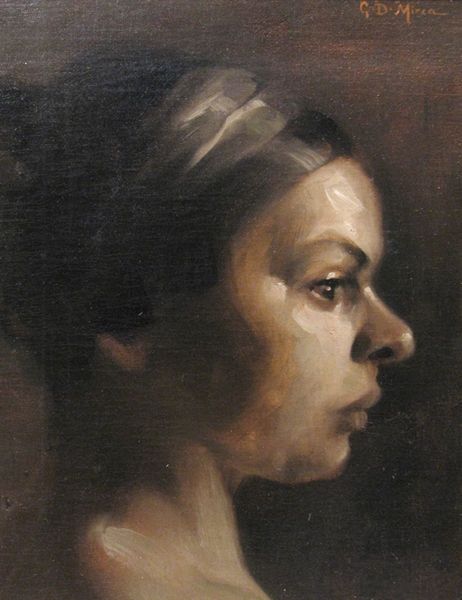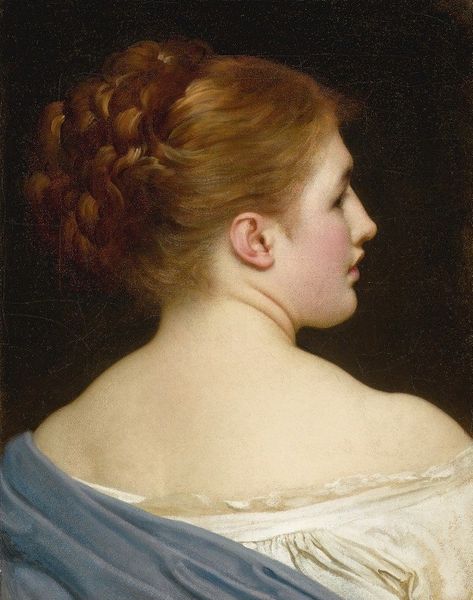
painting, oil-paint
#
portrait
#
portrait
#
painting
#
oil-paint
#
genre-painting
#
realism
Copyright: Public Domain: Artvee
Editor: Here we have Lawrence Alma-Tadema’s "Mary Magdalene," painted in 1854. The oil paint gives the figure a luminous quality, almost dreamlike, and she appears to be in a state of contemplation. What visual cues do you think connect this particular figure to Mary Magdalene? Curator: The averted gaze, the slight blush on her cheek… these gestures combined with the period jewellery could be signifiers. In art history, depictions of Mary Magdalene often oscillate between representations of worldly beauty and spiritual introspection. Look at the single earring and the necklace. Consider them as possible indications of wealth that she has abandoned or transformed. What do you notice about how light and darkness interact within the composition? Editor: I see what you mean. The dark background emphasizes her face and shoulders, drawing attention to her expression. Perhaps the darkness symbolizes her past, and the light, her potential for redemption? Curator: Precisely! Alma-Tadema is using the visual language of chiaroscuro not just for dramatic effect, but to tap into a cultural understanding of transformation. This contrast reinforces the spiritual journey associated with Mary Magdalene. Think about other representations of her throughout history. Are there consistent symbolic elements that reappear? Editor: I never considered the interplay of light and shadow as a way of signifying inner conflict and resolution. That’s a really insightful way of interpreting the painting’s meaning. Curator: And what does it tell us about the ongoing allure of her narrative, if we're still depicting it centuries later? Editor: Good point. Thanks; I now have so much to think about regarding visual symbolism!
Comments
No comments
Be the first to comment and join the conversation on the ultimate creative platform.
